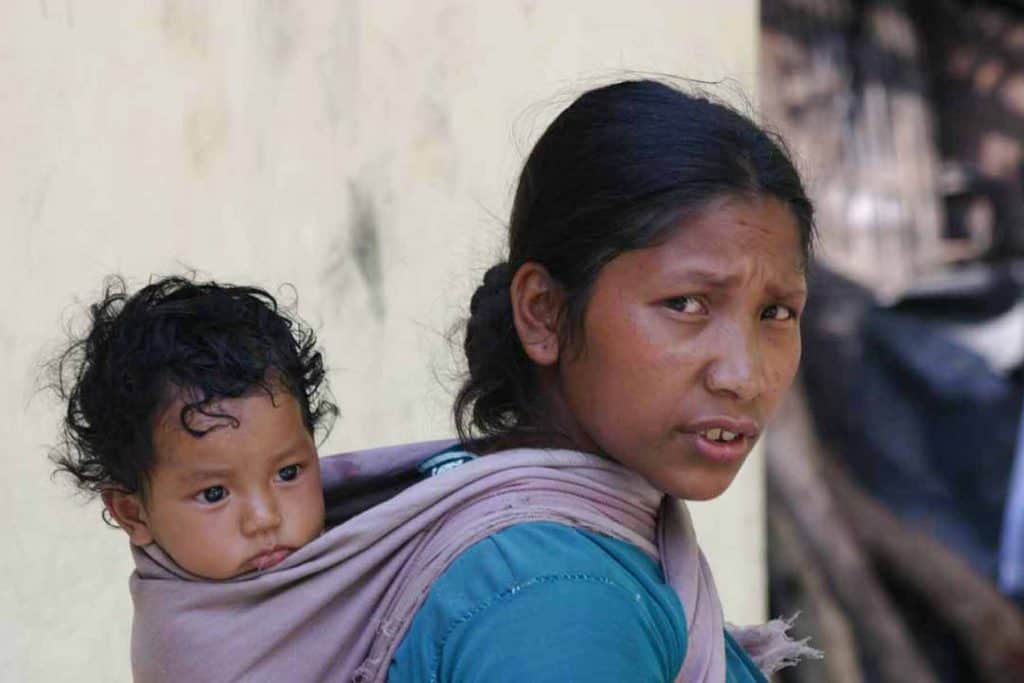
South Asia’s ‘green revolution’ saw the roll out of high-yield crops, improved technology and agricultural resources, but proper nutrition is still out of reach for many. The situation has seen an alarming rise in numbers of children with stunted growth, leading to an intergenerational problem influenced by gender-determined consumption patterns.
South Asia’s remarkable green revolution resulted from the introduction of high-yield crops such as cereals, along with improved technology and agricultural resources, but still proper nutrition is not getting through to the people who need it, and this region is home to more than half of all the world’s children with stunted growth.
The green revolution has not had the dietary impact anticipated. Child stunting (low height for age) is a result of inadequate nutrition, and it persists to alarming levels in South Asia’s children – more than one third, or 38 per cent, are stunted.
Stunting is irreversible and its affects are enduring – influencing the quality of life for decades as it reaches across to the next generations. The nutritional status of a child in the first 1000 days (from conception to two years old) plays a significant role in determining the potential of their physical, mental and economic future. Poor nutrition during these crucial days impairs their cognitive development, consequently reducing mental capacity during adolescence, and affecting adult labour productivity.
When it comes to stunted women, the inter-generational impact of inadequate nutrition is influenced by gender-determined consumption patterns. In many cultures, women prepare food, playing a significant role in nurturing household members and seeing to their nourishment. Women face significant stresses in attempting to serve meals expected by male members of the household, especially when budgets are stressed and food shortages arise. They carry a significant burden in maintaining the expected standards regarding what is served to the family, and may deprive themselves to ensure that children are fed and they meet the expectations of the male household heads. Under-nutrition, coupled with inadequate maternal care, leads to low infant birth weights, perpetuating the cycle of under-nutrition and disadvantaging a child from birth. It becomes a vicious cycle of intergenerational poverty and malnutrition.
Deep determinants like the Gender Parity Index, the socioeconomic index measuring relative access to education of males and females, along with civil liberty, are strongly linked with women’s empowerment or gender inequality, and influence dietary intake (an immediate determinant) for girls, as well as maternal and child health care (an underlying determinant).
Our research into this produced a couple of interesting findings. Firstly, there is two-way relationship between food availability and girl stunting and secondly, that the effect of increased food availability – for example through improved yields in agriculture – will reduce girl stunting, but only for a short period. No long-term benefit is evident, challenging the potential for sustainable solutions to food insecurity. We found that, despite the recent discussion on the threats of global food insecurity due to land degradation and extreme weather events, and a growing focus on sustainable agriculture, the reduction of girl stunting is not determined by food availability, but is related to distribution and accessibility of food.
There is a great deal of rhetoric about empowerment of women and raising their incomes as an indirect means to improve investment in children and improve nutrition. However, little of this focuses on interventions that will ensure optimal nutrition for girls and women, and break the inter-generational cycle of poverty and deprivation that perpetuates inequality.
 Image by tigerpuppala_2 via Wikimedia Commons. https://commons.wikimedia.org/wiki/File:First_rice.jpg
Image by tigerpuppala_2 via Wikimedia Commons. https://commons.wikimedia.org/wiki/File:First_rice.jpg
While under-nutrition rates for males and females are roughly the same, except in South Asia, and in fact boys may be more under-nourished in some regions, improving maternal and girls’ nutrition has a direct impact on the whole of society – in particular the next generation. While gender inequalities are deeply rooted in many societal, economic and political constructs, and are reinforced by society, inadequate nutrition creates intergenerational poverty traps. Overcoming under-nutrition is the key to improving the productivity necessary to change the household dynamics of production, consumption and reproduction, and reducing the cost of public provision of health care and social safety nets.
As we enter the post-2015 era of Sustainable Development Goals (SDGs), we will need to focus our attention not only on the imperatives for action but also on the costs of not acting. It is ironic that in the 169 SDGs currently under discussion, nutrition is mentioned just once. Empowering women through education is necessary, but not a sufficient condition for the better health and wellbeing of women and girls. What we need is a combination of nutrition-specific, nutrition-sensitive initiatives, and capability-enhancing policies aimed at reducing gender bias and better institutions. This will change the household dynamics of food distribution.
For now, despite the positive impact of the green revolution, the desperate cycle of poverty and under-nutrition continues, and the challenge for policymakers is to break it.
By Dr Nazmun Ratna (Senior Lecturer in Economics, Faculty of Agribusiness and Commerce, Lincoln University, New Zealand) and Professor Sheryl Hendriks (Professor in Food Security, the Co-(Node) Director: DST/NRF CoE in Food Security and founding Director of the Institute for Food Nutrition and Wellbeing (IFNuW) at the University of Pretoria)
This article first appeared on http://www.policyforum.net/whose-revolution/#sthash.E2IaeHIb.dpuf
related Articles
New study assesses compliance with South Africa’s proposed R3337 regulations
Photo RF._.studio / Pexels. In light of the South African government’s publication of a draft regulation to introduce warning labels…
Five reasons to support draft Labelling Regulations R3337
The are numerous public health benefits of the draft Labelling Regulations R3337. Photo Nathália Rosa/Unsplash. South Africa’s Minister of Health…
Breede River Municipality hosts unique food security learning journey
“During two sunny winter days in early May, the Breede River Municipality (BVM) hosted a ‘learning journey’, an innovative…



